It’s hard to talk about ornamental tropical garden trees without mentioning the stunning, globally-adored Jacaranda tree. Being widely planted in most areas that don’t have much frost over winter, this long-lived tree is the perfect pick for those with a lot of space in their landscapes looking to establish a large decorative tree.
Here is your full guide to growing and caring for the Jacaranda tree.
More...
Family: | Bignoniaceae |
|---|---|
Genus: | Jacaranda |
Species: | J. mimosifolia |
Common Names: | Jacaranda tree, blue jacaranda |
Location: | Outdoor |
Type: | Flowering tree |
Growth: | 8 to 15 metres tall, 5 to 10 metres wide |
Sun requirements: | Full sun |
Foliage Colour: | Green |
Flower Colour: | Purple |
Flowering: | Spring to summer |
Fruit: | Seed pods in late summer |
Maintenance level: | Low |
Poisonous for pets: | Non-toxic to cats and dogs |
Getting to Know the Jacaranda Tree

A true beauty, this sub-tropical tree features attractive and long-lasting violet-coloured flowers that form in large clusters during spring to early summer.
The arched branches will form an attractive canopy shape once established and the delicate fern-like leaves will allow dappled sunlight to filter through, creating relaxing shady environments in your garden for plants and people to enjoy.
The Jacaranda tree is either semi-evergreen or deciduous depending on the climate it’s growing in, but either way, it will easily impress as an addition to your garden.
Jacaranda mimosifolia, also known as the Jacaranda tree or blue jacaranda, is a part of the Bignoniaceae family and is native to tropical and subtropical regions of South America. Naturally, these trees thrive in similar environments so our endemic climates in Australia make for a perfect fit.
Being fast-growing in more tropical environments and more moderate in other areas, this tree will only flower once matured, which could take about 8 years or more.
As a garden tree, Jacaranda will grow to about 8 to 15 metres tall and 5 to 10 metres wide but could also reach greater heights depending on conditions. This tree is considered an invasive species in some parts of Australia because of the deep, invasive roots that can out native species around it.
It also grows invasive surface roots that can disturb paving and other nearby constructs so the positioning in your garden will need to be well thought through.
Popular Jacaranda Species
Jacaranda arborea
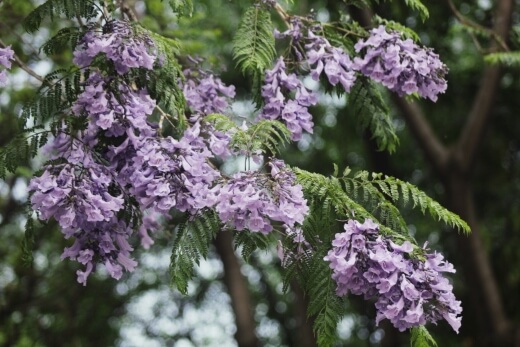
Source: venus-garden.tumblr.com
This species is endemic to Cuba and is currently threatened by habitat loss in the area. This tree is not widely grown as a garden ornamental like its more popular J. mimosifolia counterpart.
Brazilian Caroba Tree (Jacaranda caroba)
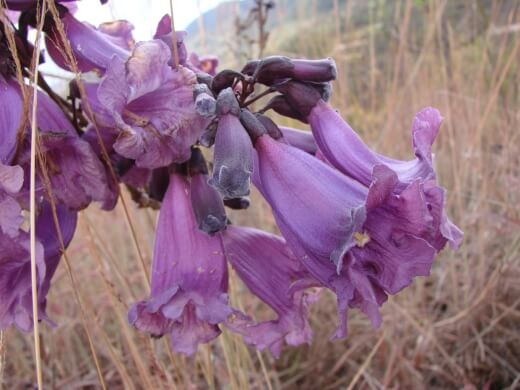
Source: en.wikipedia.org
Also known as the Brazilian caroba tree, this species is used as a medicinal plant and only grows to about 5 metres tall.
How to Grow Jacaranda Tree
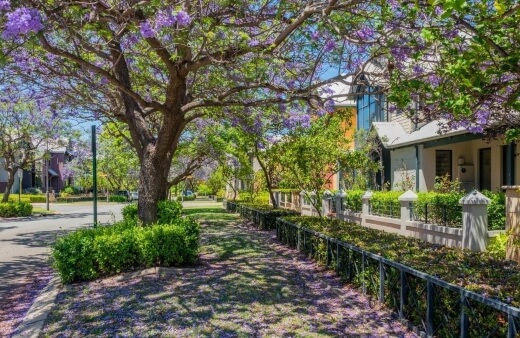
These trees are widely grown from seeds or propagated using softwood cuttings. Seed grown trees will naturally take far longer to bloom than trees grown from cuttings.


Get Your Free Guide:
Master Growing Australian Natives eBook
A Must Have Complete Guide for Every Australian Garden
Get Your Free Guide:
Master Growing Australian Natives eBook
A Must Have Complete Guide for Every Australian Garden
Another great advantage of propagating by cuttings is that your plant will be a true to type copy of the parent plant whereas seed grown trees are less likely to do so.
Ways to Propagate Jacaranda Tree
Propagating Jacaranda Tree Using Stem Cuttings
- Using pruning shears, sharpened scissors or a pruning saw, cut away a healthy branch that is at least 2cm in diameter.
- Take a cutting from the branch that has grown past the bark and that contains some healthy buds. Cut just above the point where the leaf grows from the stem.
- Make a diagonal cut on the stem that is around 2cm as the longer cut surface will encourage rooting.
- Your cutting should be around 7 to 10 centimetres long and have at least three nodes on it.
- You can place the cutting into a jar filled with room temperature filtered water to root which can take about 2 to 3 weeks. Alternatively, you can use a container and place the cut end of your cutting into an enriched and moist soilless growing medium like perlite or vermiculite.
- You can optionally dip the cutting into some rooting hormone to boost the production of new roots.
- Place your cutting in a location that gets bright but indirect light.
- Water-rooted cutting should be transferred to a container once the roots have grown to around 2cm.
- Allow your cutting to establish itself for at least 8 months before transplanting it into the garden, keeping the potting mix moist.
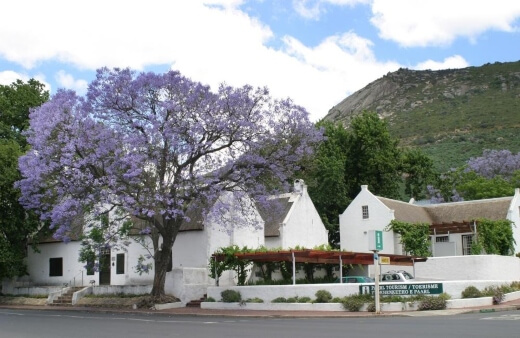
Growing Jacaranda from Seed
- Collect dried and browned seed pods directly from the tree in late summer after flowering. Avoid collecting seed pods from the ground.
- Crack open the pods at home to extract the seeds.
- Soak the seeds in water for about 1 day then place them onto a prepared soil bed in seedling containers or pots.
- Add a thin layer of soil on top of the seeds and keep moist.
- After a few weeks, the seeds should sprout.
- Thereafter, allow the seedlings to develop for about another 8 months before transplanting them into your garden.
- Once in your garden, you can let your new baby grow and flower. Jacaranda trees can live for up to 50 years!
Propagating Jacaranda from a Nursery Plant
- Once you have your healthy seedling from the nursery, you can dig a hole in a spot in the garden you have chosen. The location should get as much full sun as possible.
- Your hole should be twice as wide and to the same depth as the root ball.
- Carefully transfer the seedling into your hole, being careful not to disturb the roots too much.
- Gently backfill with soil and form a mound around your seedling to guide water away from it.
- You can mulch lightly and feed occasionally as the tree develops.
Sowing Seeds vs Planting Seedling: Find out which is Better.
Planting Jacaranda Tree
Location will be very important when growing a jacaranda. These tropical trees require certain conditions to thrive and flower prolifically.

Best Lighting Conditions
Full sun positions are ideal for this tree to bloom best and grow optimally. Choose a spot in your front or back yard that gets at least 6 to 8 hours of sun per day.
Ideal Soil for Jacaranda Tree
Plant in rich, well-draining sandy soil with a slightly acidic pH level for the best results. These trees can tolerate other soils as long as they are not heavy and clay-like.
Try to ensure your soil is protected from strong winds, especially during initial establishment.
Climate Requirements
Warm and temperate areas with high humidity are best for jacarandas but they can also grow in cooler areas as long as severe frost is avoided. Cooler areas will cause the tree to grow slower and smaller and it will also bloom less prolifically.
Jacaranda Care Guide
Generally, these trees will be low maintenance and steady growers. But a little extra care can also go a long way in establishing a healthy, thriving specimen. Here are a few care tips:
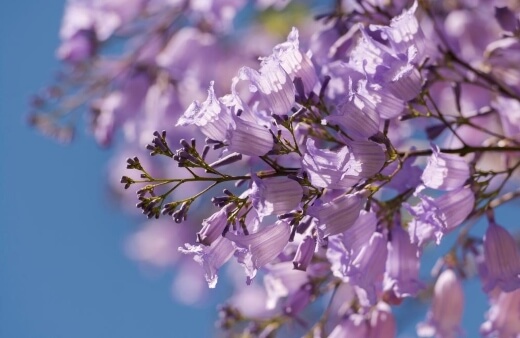
Watering Your Tree
Once established, this tree will be moderately tolerant to drought and short spells of light frost. Water your tree around its base when the top 8 to 10cm of soil feels dry. Water about once per week generally.
Water several times per week in extended hot and dry spells. Water about once per month over the winter period.
Pruning Jacaranda Tree
Young trees will need to be pruned to form a main central trunk for strength and stability. Try to avoid pruning beyond that as your tree is maturing. Thereafter, prune only to remove dead, broken or diseased branches.
What Fertiliser to Use
Feed your tree annually in spring with a balanced 10-10-10 tree fertiliser to encourage bigger blooms and new growth. These trees are sensitive to nitrogen so using a balanced fertiliser is best.
If you are fertilising grass near your tree, it is most likely already getting enough extra nutrients.
Cleaning Around Your Tree
Leaves, flowers and seed pods can create a lot of litter when they drop around your tree. You will need to be diligent about cleaning it up as the litter can rot and become unpleasant if left to accumulate and sit on the ground.
This is also why many growers choose not to plant jacarandas near pools, patios and other high traffic areas.
Mulching Jacaranda Tree
During the hot summer months, you can mulch around the roots of your tree with organic materials like compost, straw and bark. This will help the soil retain moisture during this period.
Apply mulch to moist ground and not dry ground. Your mulch layer should only be about 50mm thick for the best results.
Common Jacaranda Pests, Problems & Diseases

Small Insect Infestations
Luckily, these trees are generally very resistant to pests and disease when grown outdoors. In rare cases, trees can be infested by small aphids or mites which can easily be knocked off when sprayed with soap and water.
Alternatively, you can treat infected plants with neem oil or a similar horticultural spray.
Yellowing Leaves
This is a clear sign that your tree is not being watered deeply enough. If your leaves are turning yellow, water deeply more frequently, especially on overly hot days.
Dying Leaf Tips
Excessive fertilising will result in damaging the mineral ratio in your soil which can cause leaf tips to die or yellowing leaf edges to form. To treat this, remove any damaged or dying foliage and water the fertilised soil thoroughly to try to flush out the excess minerals.
Jacaranda Tree Frequently Asked Questions
Where do jacaranda trees grow best?
Jacaranda trees grow beautifully in Australian gardens, but do need space to thrive. Plant them somewhere open, in full sun and reasonably moisture retentive soil (or water them regularly in pots).
Jacarandas prefer some shelter, and hold their flowers for longer when protected from wind, so somewhere with surrounding planting can help young trees to establish.
Are jacaranda trees poisonous?
All parts of the jacaranda are poisonous to humans and pets, and can cause vomiting, diarrhoea and irregular heartbeat in mild cases, and even death if large amounts are ingested.
Small amounts of jacaranda flowers ingested will do little damage, but they are not advisable for gardens with pets.
What does the jacaranda tree symbolise?
As well as looking beautiful in our gardens, jacaranda trees symbolise rebirth, wealth, good luck and wisdom throughout many cultures. The iconic tree-lined jacaranda paths in South America are a sign of spring when they flower, and of summer when their petals drop to the floor.
What is the lifespan of a jacaranda tree?
Jacaranda trees tend to live for around 50 years in cultivation, but in ideal subtropical conditions with good rainfall and balanced drainage, they can live for over 150 years quite easily.
Jacarandas are slow to grow, and in cooler climates will flower once every few years rather than every year, so it can take time for them to establish.
Are jacarandas messy trees?
For those of us with pristine lawns, and a plethora of rakes and lawn tools to sweep fallen leaves and pine needles, jacarandas might not be the best choice as their flower petals drop on mass at the end of their flowering season creating a full carpet of blue and purple petals.
Many gardeners think this is messy, but personally, I can’t help but find the beauty in this seasonal carpet.
Can I plant a jacaranda tree in my yard?
Small yards are too small for mature jacarandas, which can grow to around 50 feet tall at maturity, but you can keep them contained and limit their growth in pots, or purchase dwarfed varieties from good garden centres.
For larger yards and gardens, there are few more impactful spring and summer trees than a mature jacaranda.
Are jacaranda tree roots invasive?
Jacaranda tree roots can be invasive and destructive when planted too close to structures and will lift paving slabs over time. Therefore, it is recommended to plant jacaranda trees at least 15m from a pool or solid structure to avoid future damage.
Do jacaranda trees smell?
Jacaranda blooms have a beautifully sweet fragrance but you have to get up close to smell it as it is very subtle. They don’t fill the garden with fragrance in spring, but as the leaves drop in autumn they have a uniquely sweet smell that’s hard to forget.
What are the benefits of jacaranda trees?
Jacaranda trees have numerous benefits, but should only ever be used as a topical remedy. There are some medicines that derive from the bark which are suitable for ingestion, but certainly not homemade remedies!
Do jacaranda trees need a lot of water?
Jacaranda trees have shallow roots that feed mostly on the surface water of your soil. This can lead to a dry appearance around the base of trees, particularly if they are planted in lawns.
Water or irrigate your jacaranda trees in Australia through summer to keep them happy, and maintain soil moisture.
Can you prune a jacaranda?
Despite common teachings, you can actually prune a jacaranda. It’s not easy and takes a precise eye, but they can be shaped into neat espaliers or trained against walls.
Pruning jacaranda heavy-handedly will ruin their shape, so unless you are confident, and prepared to prune them every year to maintain their unnatural shape, it's best to leave jacarandas to their natural form.
Do jacaranda trees attract bees?
Jacaranda trees are brilliant for pollinating birds and insects, including bees. Their nectar is not rich or strong, but their flowers are open and easy to access, and their blue and purple colour is easily spotted by bees and wasps from a distance.
Here are more purple flowering trees to grow in Australia.
Where do jacaranda trees grow in Australia?
These trees are particularly widespread in south-eastern Queensland but also occur in most of the other states. Your jacaranda will love heat and humidity but be careful not to scorch or burn your tree if the temperatures get too high.
How quickly does a jacaranda tree grow?
This tree will often grow to less than 8 metres tall in cultivation. But, in the ideal conditions, they can grow to 15m or more, taking about 20 years to reach full maturity and size.
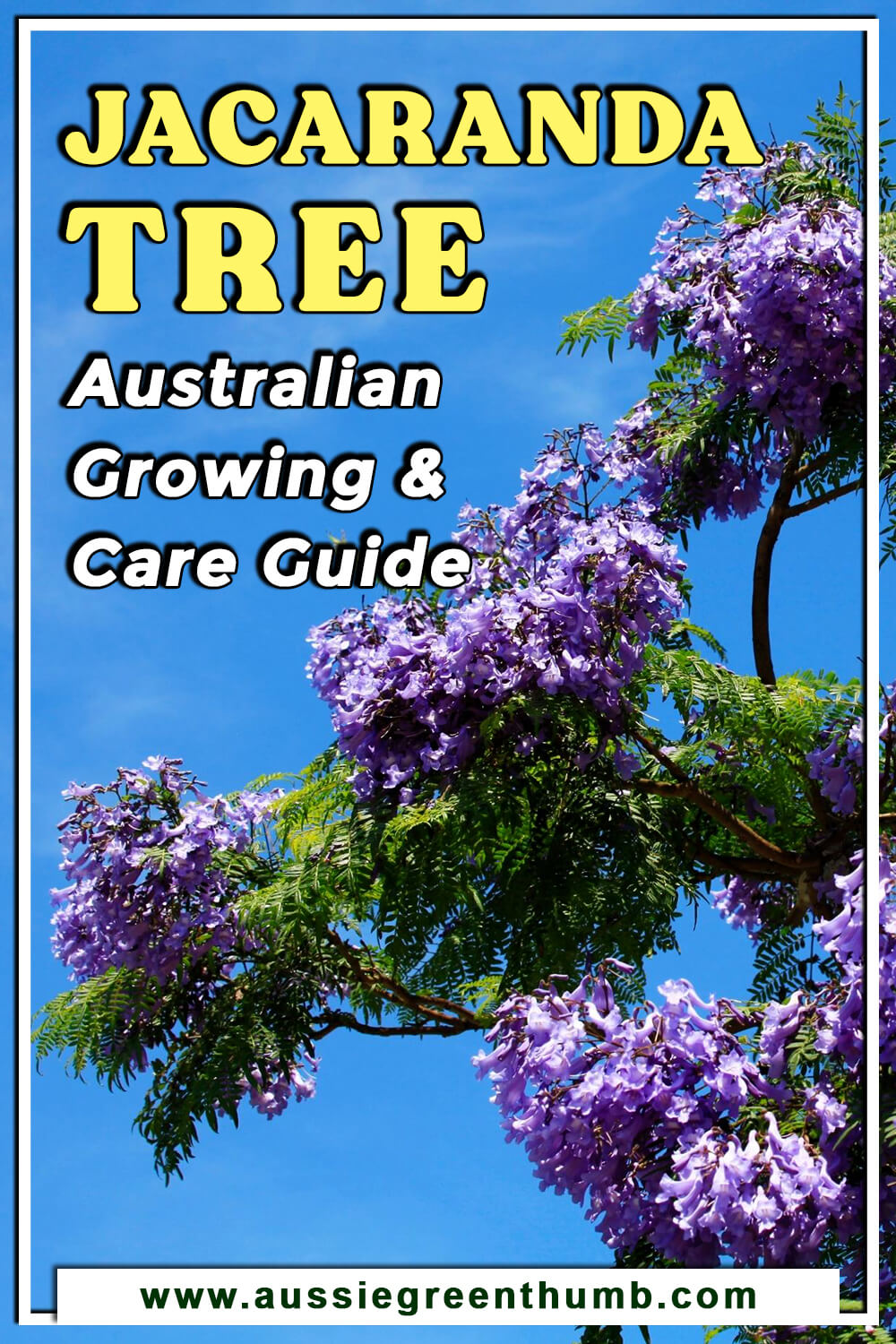
Wrapping Up Our Jacaranda Tree Guide
The Jacaranda tree is an excellent choice for any gardener looking at establishing a large ornamental in their gardens. This tropical tree will create a beautiful silhouette in your landscape while also providing shade for those hot summer days once established.
The prolific purple blooms will add bursts of colour to your garden during flowering and the fern-like foliage will always be an attractive feature to add some texture to these spaces.
Being easy to grow and pretty low-maintenance, it’s no wonder the Jacaranda tree has garnered such global admiration.
Published on January 10, 2023 by Maisie Blevins
Last Updated on September 20, 2025


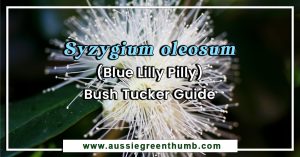
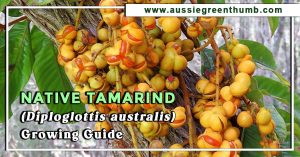
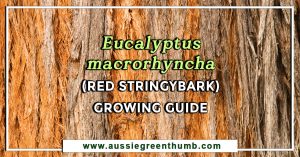
I have found conflicting information as to the toxicity of the Jacaranda M tree. I would like to know if the wood is toxic to humans and pets.
Hi Stephen,
Yes indeed, there seems to be a wealth of conflicting information surrounding the toxicity of Jacaranda mimosifolia online.
After extensive research, my findings suggest that it is mainly the flowers that are toxic to humans and animals if ingested in large quantities. However, a few sources did also raise concerns regarding the wood of the tree, particularly the younger, greener wood.
I would suggest taking the safer approach and assuming that the tree is toxic to humans and pets. Based on my research, most agree with the toxicity of the species rather than not.
I hope this information proves useful and I’m wishing you the very best with your landscaping endeavours.
Best regards,
Gary Clarke
Hi Gary,
Thank you for taking the time to respond to my email. Fortunately neither I or my pet have ingested any part of the Jacaranda trees where I live. However, I do harvest the long 2-3 inch diameter straight branches each year to make custom canes. I let the branches dry out for about 6 months before carving begins. So far I have not noticed any allergic reaction to the wood.
Again, thanks for your reply.
Regards,
Stephen
Hi Stephen,
You should be fine if it’s dried. The wider jacaranda group is more toxic than mimosifolia (which as far as any academic study goes, isn’t particularly toxic once cut), so once it’s dried and worked it wouldn’t have severe toxic effects from a cat or dog chewing on it.
Best regards,
Gary Clarke